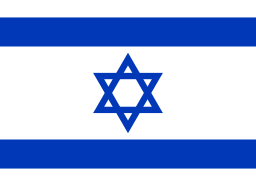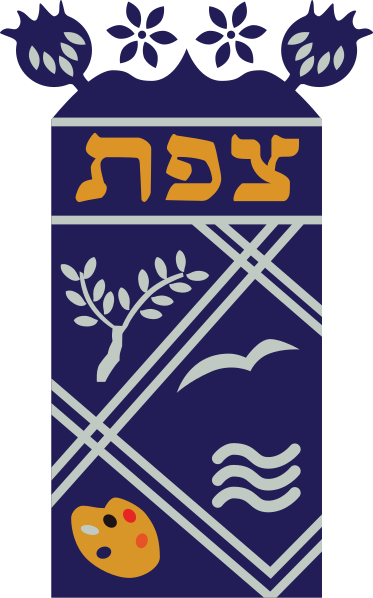
view: Safed & Mt. Meron Coordinates: 32° 57' 52.70" N 35° 29' 45.60" E



| Home | Maps | Links |


Safed1, 11 is thought to be the ancient fortified town of Sepph that Flavius Josephus 2 (37 CE - ca. 100 CE), the Jewish-Roman historian and Jewish General, mentions in his history War of the Jews. In his history, Josephus states that as the Jewish General responsible for the defense of the Galilee he fortified Safed and stationed a battalion of soldiers in anticipation of fighting the Roman Legions during the First Jewish War (66 CE - 73 CE).
The Book of Judges (Judges 1:17) states that the region around Safed belongs to the tribe of Naphtali 3. The Jerusalem Talmud 4 informs us that during the Second Temple era (530 BCE - 70 CE) 5 Safed, because of its 900 meter (0.56 mile) elevation above sealevel, was one of five cities that were used to announce festivals and new moons by lighting signal fires. Safed may also have been a Levite city; such cities were Refuge Cities 10 providing asylum from blood vengeance.
The Crusaders arrived in Safed in the last decade of the eleventh century during the First Crusade. Safed's Jews were probably massacred in conformity with the Crusader's typical behavior towards Jews and Muslims. During the twelfth century CE, Safed, renamed Saphet by the Crusaders, continued as a fortified city under the Crusader Kingdom of Jerusalem. Following the defeat of the Crusaders by Saladin in 1187 CE, Jews eventually returned to Safed in 1216 CE. However, fighting between Christians and Muslims continued for the next fifty-three years until, in 1240 CE, a treaty returned control of Safed to the Crusaders; the Jews were left in peace.
The Mamluks captured the city from the Crusaders in 1266 and made Safed the administrative center of the province of Mamlakat Safad, part of Mamluk Syria. The growth of the Jewish community was welcome.
Many prominent rabbis found their way to Safed after their 1492 expulsion from Spain; others arrived as refugees after the 1502 re-imposition of the Spanish Inquisition 7. Safed was attractive to these rabbis because the second century CE rabbi and author of the Kabbalistic Zohar, Shimon Bar Yochai 8, had lived and taught in the area. Among these rabbinical scholars were the Kabbalist Isaac Luria; Joseph Karo, author of the Shulchan Aruch 9 that strongly influenced how Jewish communities maintained Jewish Law and observances; and the poet Rabbi Shlomo Halevi Alkabetz. Kabbalah has a strong influence on the modern Hassidic movement.
Along with Mysticism, the Jews brought economic energy and growth; this was the beginning of two-hundred years known as the Golden Age of Safed.
The sixteenth century CE saw Safed become the center of Jewish mysticism and of Kabbalah 6; it has remained so down to the present day. The city is considered one of four holy cities, the others being Jerusalem, Tiberias, and Hebron.
The year 1517 saw the defeat of the Mamluks by the Ottoman Turks. The political centrality of Safed continued under the Ottomans as the capital of the Safad Sanjak, a region that encompassed the Galilee and extended to the Mediterranean coast. The Ottomans would remain in power for four centuries, until the end of World War I in 1918.
Safed suffered an earthquake in 1759. The economic and physical damage done to Safed was so severe that it brought an end to its Golden Age. Followers of the Vilna Gaon and of the Ba'al Shem Tov arrived in Safed and augmented the existing Sephardi community as the city began to rebuild. However, a period of difficulties continued to plague the city: famines, epidemics, an 1834 Arab pogrom, a severe 1837 earthquake, and a Druze pogrom in 1838.
The Ottoman Turks, having backed the Germans during the First World War, suffered military defeats at the hands of the British, and later lost territory to them under the provisions of the 1921 Versailles Treaty.
During the war years, the British had promised self-rule to both the Jews (under the Balfour Declaration) and the Arabs. During the British Mandate period in Palestine, the British policy was pro-Arab; this led to friction between the Jews and the Arabs. The latter believed that the increasing population of Jews would eventually force the Arabs off their land. Relations between the two groups broke down with the 1929 Arab Riot that occurred throughout Palestine. During the three-day riot, eighteen Safed Jews were murdered, many others were injured, and much of the Jewish Quarter was burned.
Safed, because of its strategic location, became a focus of much fighting during the 1948 War of Independence. The British turned the strategic high lookouts to the Arabs. The Haganah and the Irgun fought Syrian and Jordanian troops for control of the city. Jewish troops were able to capture Safed's strategic police station and Citadel.
In subsequent decades Safed received refugees, many of whom were Holocaust survivors, from Hungary, Poland, Rumania, and other Eastern Europe countries. Immigrants arrived in Safed from Russia, Morocco, Eithiopia, and Tunisia.
Safed Natives
Notable Residents
|
Please contact |
|
This page is hosted at no cost to the public by JewishGen, Inc., a
non-profit corporation. |
|
KehilaLinks Home |
JewishGen Home
|
Created: 25 July 2018
Last Modified: 09-08-2018
Copyright © 2018 Leah Gedalia
All Rights Reserved.